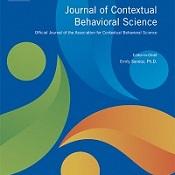
Ong, C.W., Petersen, J.M., Terry, C.L., Krafft, J., Barney, J.L., Abramowitz, J.S., & Twohig, M.P. (2022). The "how" of exposures: Examining the relationship between exposure parameters and outcomes in obsessive-compulsive disorder. Journal of Contextual Behavioral Science, 24, 87-95. DOI: 10.1016/j.jcbs.2022.03.009
Exposure and response prevention (ERP) is the most empirically supported treatment for obsessive-compulsive disorder (OCD). However, details on how to effectively conduct ERP are lacking. The current study aimed to identify exposure parameters associated with better subsequent outcomes in ERP for OCD. We analyzed data from 271 therapy sessions across 46 participants in a randomized controlled trial comparing traditional ERP and ERP conducted from an acceptance and commitment therapy framework (ACT + ERP). Multilevel model results indicated that experiential delivery of acceptance/tolerance practice was associated with higher exposure homework adherence, lower psychological inflexibility, and less OCD symptom severity (except contamination) the following week, underscoring the potential importance of experiential learning in ERP. In addition, exposure parameters had differential effects across symptom dimensions: more collaboration when designing exposures predicted less concern about unacceptable thoughts, whereas explaining the rationale of ERP was associated with less symmetry concerns a week later. While more research is needed to further clarify the workings of ERP, our findings tentatively support use of experiential learning over didactic teaching of acceptance/tolerance and personalization of exposure parameters based on presenting OCD dimension.
To find the full text version of this article and others (as well as download a full text pdf.), ACBS members can visit the ScienceDirect homepage here.
